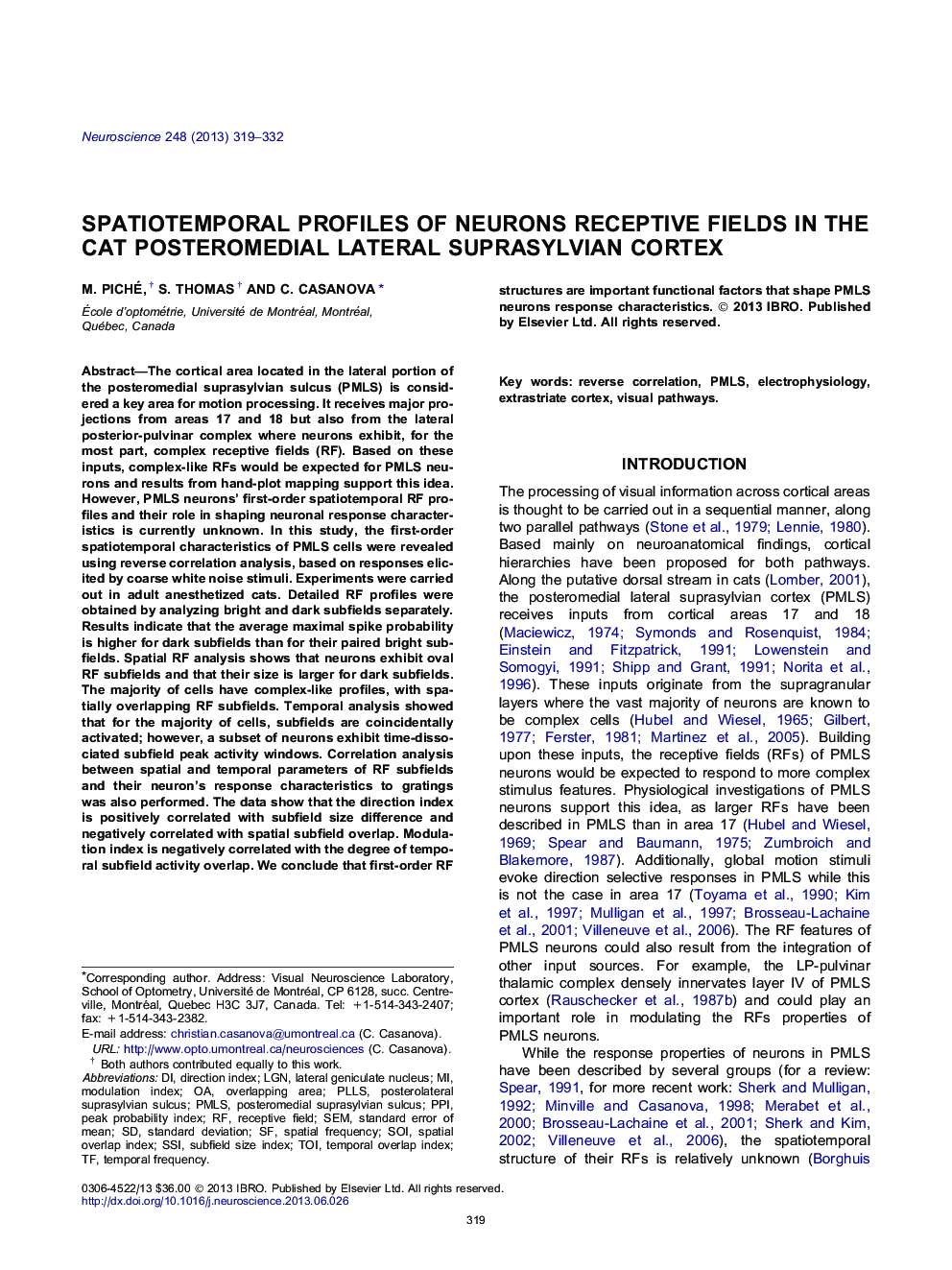| Article ID | Journal | Published Year | Pages | File Type |
|---|---|---|---|---|
| 6274701 | Neuroscience | 2013 | 14 Pages |
â¢Neurons from the cat PMLS cortex were recorded during sparse noise stimulation.â¢Receptive fields (RF) spatiotemporal profiles were obtained by reverse correlation.â¢Most PMLS cells have complex-like profiles, with spatially overlapping subfields.â¢A subset of neurons has RF subfields that can be separated in the time domain.â¢Spatiotemporal features correlate with response characteristics to gratings.
The cortical area located in the lateral portion of the posteromedial suprasylvian sulcus (PMLS) is considered a key area for motion processing. It receives major projections from areas 17 and 18 but also from the lateral posterior-pulvinar complex where neurons exhibit, for the most part, complex receptive fields (RF). Based on these inputs, complex-like RFs would be expected for PMLS neurons and results from hand-plot mapping support this idea. However, PMLS neurons' first-order spatiotemporal RF profiles and their role in shaping neuronal response characteristics is currently unknown. In this study, the first-order spatiotemporal characteristics of PMLS cells were revealed using reverse correlation analysis, based on responses elicited by coarse white noise stimuli. Experiments were carried out in adult anesthetized cats. Detailed RF profiles were obtained by analyzing bright and dark subfields separately. Results indicate that the average maximal spike probability is higher for dark subfields than for their paired bright subfields. Spatial RF analysis shows that neurons exhibit oval RF subfields and that their size is larger for dark subfields. The majority of cells have complex-like profiles, with spatially overlapping RF subfields. Temporal analysis showed that for the majority of cells, subfields are coincidentally activated; however, a subset of neurons exhibit time-dissociated subfield peak activity windows. Correlation analysis between spatial and temporal parameters of RF subfields and their neuron's response characteristics to gratings was also performed. The data show that the direction index is positively correlated with subfield size difference and negatively correlated with spatial subfield overlap. Modulation index is negatively correlated with the degree of temporal subfield activity overlap. We conclude that first-order RF structures are important functional factors that shape PMLS neurons response characteristics.
